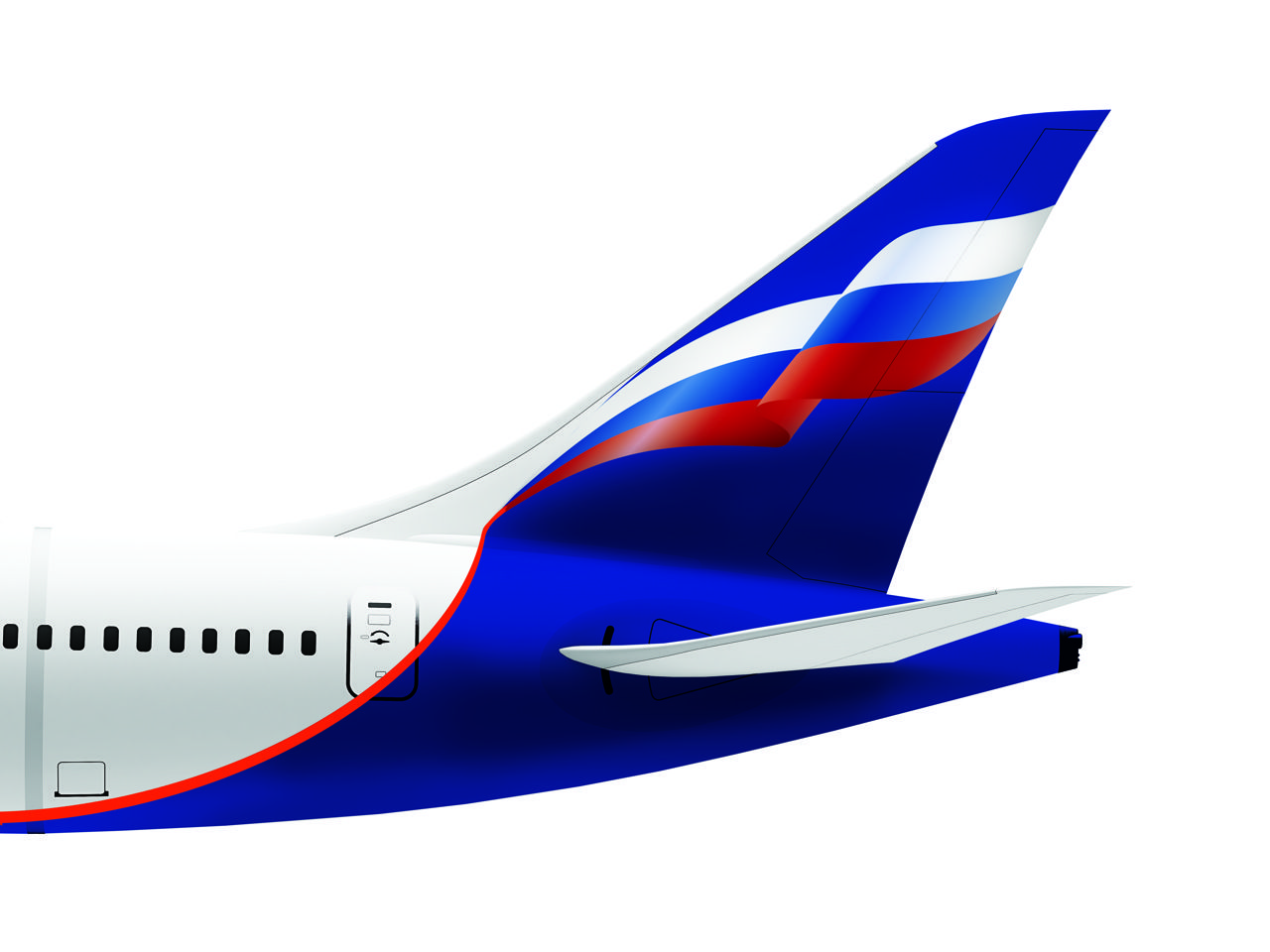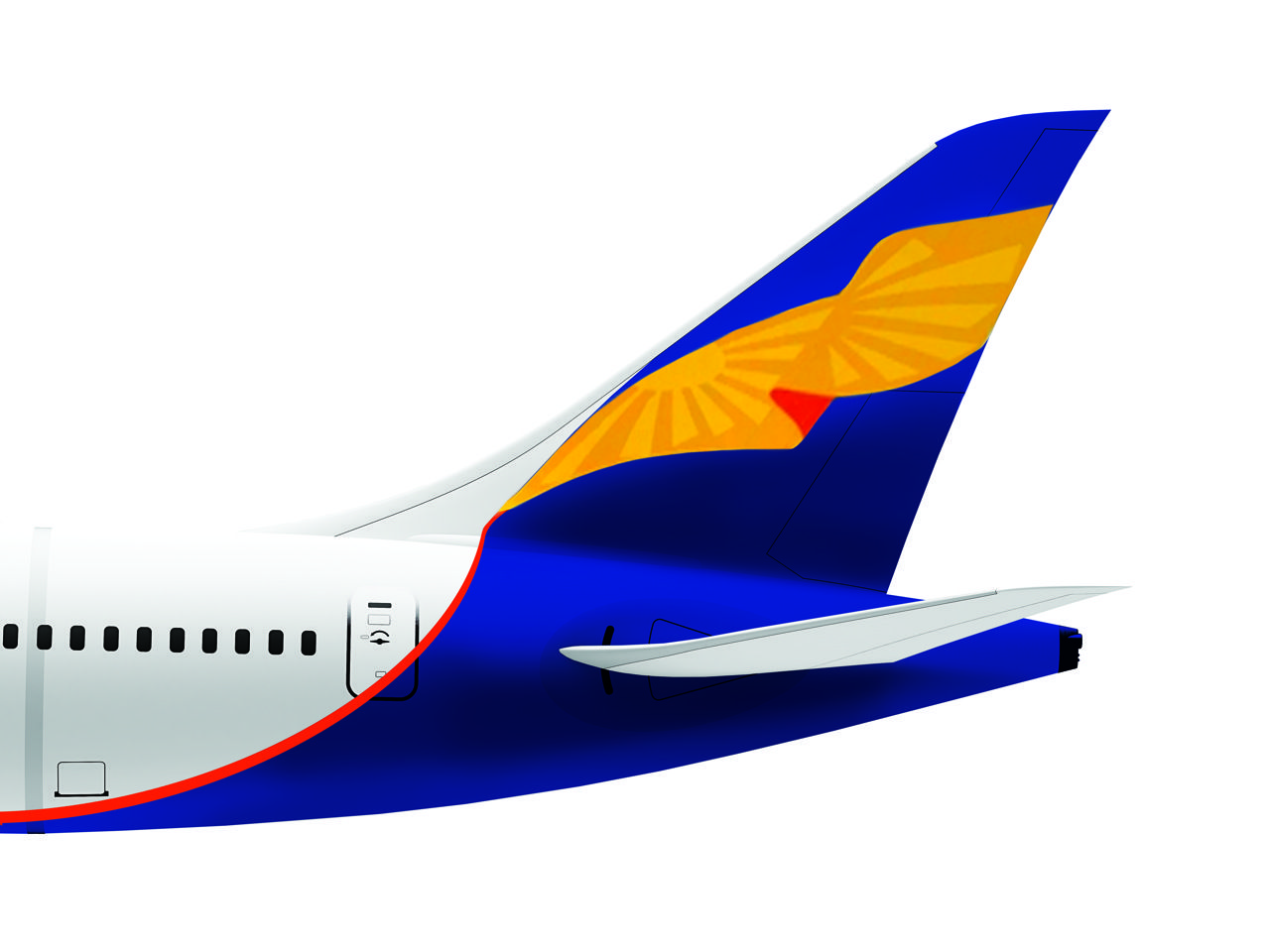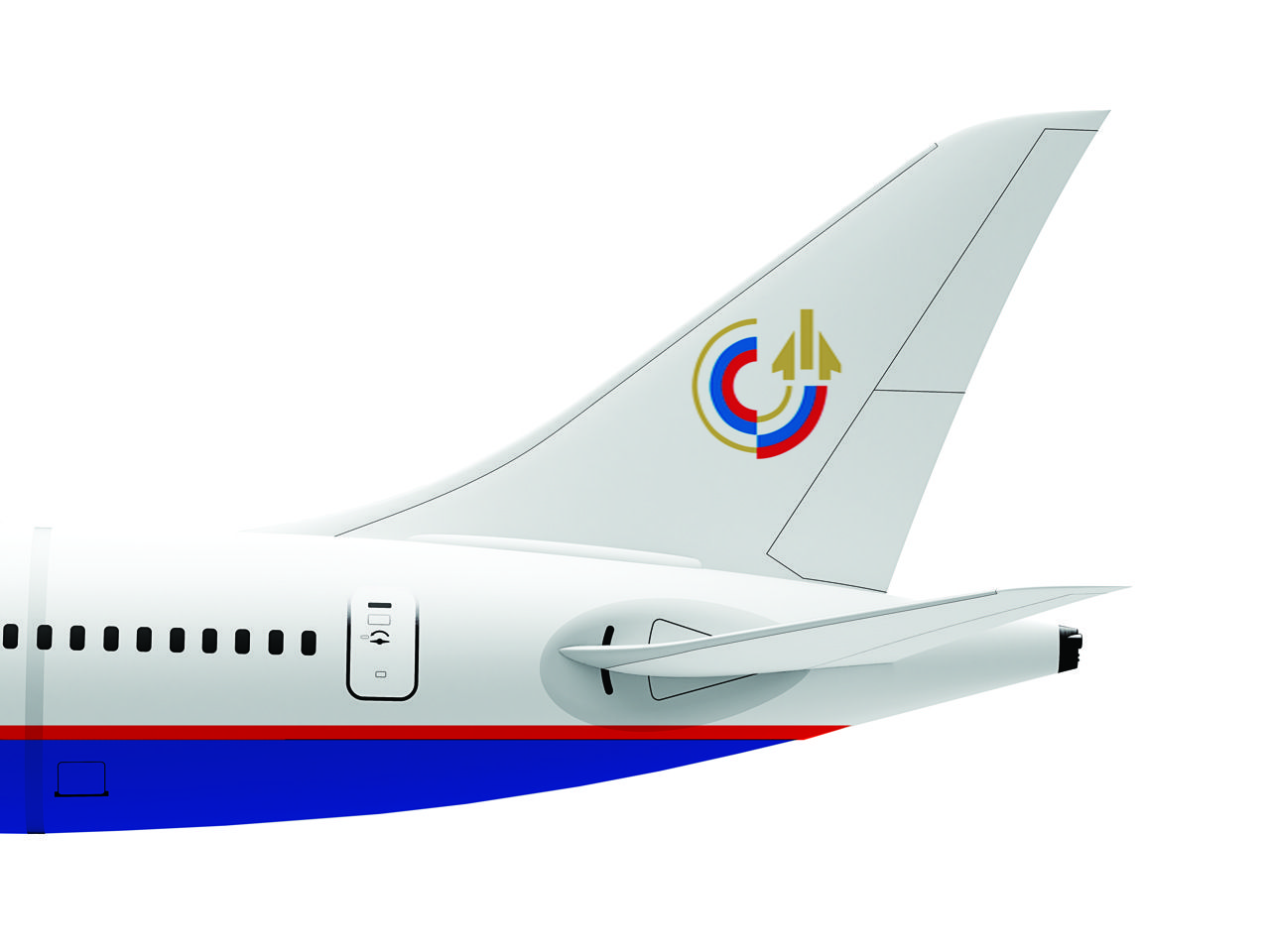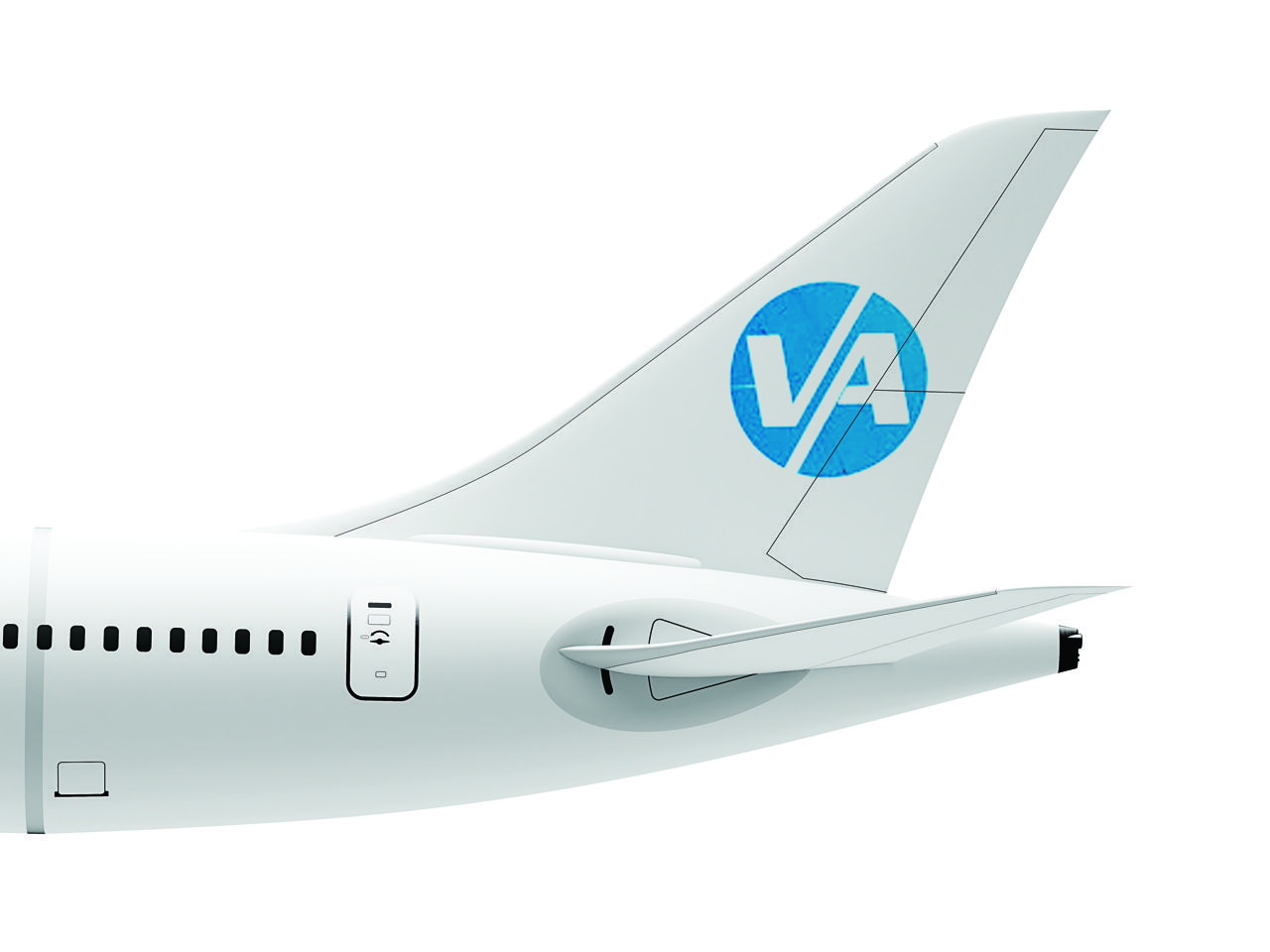Work continued in 2013 to integrate subsidiaries into the structure of the Group in order to maximise synergies, including the unification of route networks, sales systems, construction of an overall marketing strategy, and the creation of unified financial policy and tax accounting rules.
The biggest increases in passenger traffic in 2013 were achieved by Aurora (+23.0%), Donavia (+37.3%) and Rossiya Airlines (9.1%).
Further significant adjustments were made to optimise the route network of almost all subsidiary airlines in order to better integrate them into the Group structure. Entry to new markets and increased flight frequency on new routes with major capacity increases meant that load factor rates at some Group airlines declined in 2013 compared to 2012.
Load factors declined at Rossiya Airlines (-1.2 p.p.), Donavia (-2.7 p.p.) and Orenburg Airlines (-3.7 p.p.). However, load factor rose at JSC Vladivostok Air (+2.1 p.p.) and JSC Aurora (+5.8 p.p.).
Aeroflot group
| 2013 | 2012 | |
|---|---|---|
| Passengers carried, thousand | 31,390.6 | 27,471.7 |
| Revenue passenger kilometers, million | 85,273.3 | 74,617.2 |
| Available seat kilometers, million | 109,063.9 | 95,598.1 |
| Passenger load factor,% | 78.2 | 78.1 |

JSC Aeroflot
Company indicators| Passengers carried, thousand |
|
|---|---|
| 2013 | 2012 |
| 20,902.4 | 17,656.1 |
| Revenue passenger kilometers, million |
|
|---|---|
| 2013 | 2012 |
| 60,226.3 | 50,532.5 |
| Available seat kilometers, million |
|
|---|---|
| 2013 | 2012 |
| 76,444.8 | 64,880.0 |
| Passenger load factor, % |
|
|---|---|
| 2013 | 2012 |
| 78.8 | 77.9 |

JSC Donavia
Company indicators| Passengers carried, thousand |
|
|---|---|
| 2013 | 2012 |
| 1,353.6 | 985.7 |
| Revenue passenger kilometers, million |
|
|---|---|
| 2013 | 2012 |
| 2,001.1 | 1,433.7 |
| Available seat kilometers, million |
|
|---|---|
| 2013 | 2012 |
| 3,019.6 | 2,077.6 |
| Passenger load factor, % |
|
|---|---|
| 2013 | 2012 |
| 66.3 | 69.0 |

JSC Orenair
Company indicators| Passengers carried, thousand |
|
|---|---|
| 2013 | 2012 |
| 3,140.9 | 3,193.5 |
| Revenue passenger kilometers, million |
|
|---|---|
| 2013 | 2012 |
| 10,983.8 | 10,505.2 |
| Available seat kilometers, million |
|
|---|---|
| 2013 | 2012 |
| 13,393.9 | 12,260.7 |
| Passenger load factor, % |
|
|---|---|
| 2013 | 2012 |
| 82.0 | 85.7 |

JSC Vladivostok Air
Company indicators| Passengers carried, thousand |
|
|---|---|
| 2013 | 2012 |
| 1,077.3 | 1,162.2 |
| Revenue passenger kilometers, million |
|
|---|---|
| 2013 | 2012 |
| 2,519.3 | 3,134.2 |
| Available seat kilometers, million |
|
|---|---|
| 2013 | 2012 |
| 3,631.9 | 4,657.4 |
| Passenger load factor, % |
|
|---|---|
| 2013 | 2012 |
| 69.4 | 67.3 |

JSC Aurora Airlines
Company indicators| Passengers carried, thousand |
|
|---|---|
| 2013 | 2012 |
| 326.3 | 265.3 |
| Revenue passenger kilometers, million |
|
|---|---|
| 2013 | 2012 |
| 356.4 | 250.7 |
| Available seat kilometers, million |
|
|---|---|
| 2013 | 2012 |
| 541.7 | 417.9 |
| Passenger load factor, % |
|
|---|---|
| 2013 | 2012 |
| 65.8 | 60.0 |

JSC Rossiya Airlines
Company indicators| Passengers carried, thousand |
|
|---|---|
| 2013 | 2012 |
| 4,590.1 | 4,208.9 |
| Revenue passenger kilometers, million |
|
|---|---|
| 2013 | 2012 |
| 9,186.3 | 8,760.9 |
| Available seat kilometers, million |
|
|---|---|
| 2013 | 2012 |
| 12,031.9 | 11,304.7 |
| Passenger load factor, % |
|
|---|---|
| 2013 | 2012 |
| 76.3 | 77.5 |
Rossiya Airlines
Passengers carried, thousand
Revenue passenger kilometers, million
Passenger load factor,%
Rossiya Airlines is developing as a regional airline based at Pulkovo Airport in St. Petersburg. In 2013, the company continued to optimise and coordinate its schedules and route network as part of the Aeroflot Group. As a result, there was an increase in flight frequency to popular destinations in the North-West and South of Russia, and to Europe and the CIS (50 more weekly flights in comparison with 2012). The share of high frequency routes in the overall route network increased by 13 p.p. to 46% (33% in 2012) and a number of new destinations were added: Syktyvkar, Moscow (Domodedovo) and Nice. The share of transit passengers increased by 4 p.p. to 16% of the subsidiary’s total passenger traffic thanks to the route network optimisation
The share of Rossiya Airlines’ regular routes operated on a code-sharing basis with JSC Aeroflot reached 90% in 2013, up 6 p.p. compared with 2012.
The development strategy of Rossiya Airlines, approved in August 2013, calls for an agreement with JSC Aeroflot on 100% code-sharing from the start of the 2014 summer timetable. The agreement envisages the transfer of all regular flights by Rossiya Airlines to commercial management by JSC Aeroflot (including pricing and ticket sales) based on a model of commuter (regional) flights. Booking systems will use the single SU code for joint flights from the start of the 2014 summer schedule and until the end of 2014.
Rossiya Airlines took a number of steps in 2013 to improve its financial results, including:
- Optimisation of flight operations with An-148 aircraft.
- Optimisation of payroll.
- An agency agreement with JSC Aeroflot to secure aviation fuel supplies (transition to formula-based pricing using Platts index, at the home airport).
A slight decline in load factor rates was due to initiatives to enter new markets and increase flight frequency.
JSC Donavia
Passengers carried, thousand
Revenue passenger kilometers, million
Passenger load factor,%
Donavia is a regional airline based at Rostov-on-Don Airport. Its mission within Aeroflot Group is to ensure sustainable Group presence on the air transport market in the southern part of European Russia. Donavia operates scheduled and charter flights for passengers and freight to cities in Russia, the CIS and other countries. The airline also provides prompt and regular maintenance of its own aircraft and the aircraft of other airlines. Since the 2013 summer timetable, Donavia has expanded the geography of its flights from the Southern Federal District: flight operations began from Krasnodar using the route network of Kuban Airlines. The airline carried out 480 return flights in 2013.
A slight decline of load factor rates was due to entering new markets.
OrenAir
Passengers carried, thousand
Revenue passenger kilometers, million
Passenger load factor,%
OrenAir is focused on charter flights from Russia to the most popular international tourist destinations. Political instability in traditional destination countries (Turkey, Egypt and Thailand) forced the Group to make significant changes to the route network in 2013. New charter flights were added from Khabarovsk and Vladivostok to the islands of Guam and Saipan (USA), from St. Petersburg to cities in Greece, Italy and Spain, and from Vladikavkaz and Mineralniye Vody to Istanbul. New regular routes were opened from Russian cities to Europe, from Ural cities to resort cities in Russia, and also an Almaty-Sochi-Almaty route. Flights to some destinations were discontinued and frequencies were reduced to the least profitable destinations. These changes were primarily related to operations in the Middle East and Africa.
The company continued its fleet upgrade programme in 2013, with one new Boeing
In order to reduce costs, OrenAir entered into an agency agreement with JSC Aeroflot in 2013 for the supply of aviation fuel, resulting in lower average prices and total cost of aviation fuel purchases through centralised procurement.
Insurance coverage was also consolidated in 2013 as part of the integration process with Aeroflot Group. The changes will reduce insurance rates for all types of insurance coverage. In addition, a unified strategy was adopted for management of credit risk.
Vladivostok Air
Passengers carried, thousand
Revenue passenger kilometers, million
Passenger load factor,%
Vladivostok Air is a regional carrier that engaged in passenger and freight transportation in 2013.
Work continued in 2013 to reduce costs in order to improve the operational and financial performance of the company. All inventory procurement was transferred to a competitive basis, and service providers for overhaul work on A320 aircraft engines were changed.
In March 2013, 52.156% of shares of Vladivostok Air owned by Aeroflot were transferred to SAT Airlines, another Aeroflot Group subsidiary, as part of the creation of a single Far East airline.
As part of process of creating a single Far East airline from SAT Airlines and Vladivostok Air, the Board of Directors of Vladivostok Air resolved on 1 November 2013 to exit the subsidiary’s operating lease agreements for A320 aircraft. Tu-204-300 aircraft were withdrawn from the regular schedule from the fourth quarter of 2013, and operations with these craft were discontinued on 28 October 2013.
The year-on-year declines in passenger traffic and turnover at Vladivostok Air in 2013 were due to transfer from October of the most popular and profitable routes to management by Aurora Airlines.
Aurora Airlines (created from SAT Airlines)
Passengers carried, thousand
Revenue passenger kilometers, million
Passenger load factor,%
A new company in Aeroflot Group, the unified Far Eastern operator Aurora Airlines, was unveiled on 6 November 2013. Aurora’s mission is to ensure sustainable development Aeroflot Group’s business in the Russian Far East. The new company brings together the assets of two Far Eastern carriers, SAT Airlines and Vladivostok Air, which have been a part of Aeroflot Group since 2011. Aurora will help to unlock the economic potential of the Far East, and to increase the mobility of the population, and will strengthen synergies with other Aeroflot Group companies.
Aeroflot holds 51% of Aurora’s shares. The other 49% of shares were transferred in January 2014 to the administration of Sakhalin Region.
In 2013, Aurora’s route network included 25 destinations in five countries. The company’s business plan calls for a rapid increase in the volume of operations. The number of flights by Aurora should increase from 172 to 534 and the number of destinations from 30 to 128 in the period from 2013 to 2018.
The Aurora fleet, which includes medium-haul Boeing 737s, is being optimised and improved by the addition of modern aircraft. Three Airbus A319s were delivered in the fourth quarter of 2013 and the number of these aircraft in the fleet should rise to seven by the end of 2014.
Aurora’s regional division will operate modern turboprop aircraft with capacities of 50 to 78 seats. Aircraft with up to 20 seats will be acquired for local flights. The total fleet size is planned to reach 40 aircraft by 2018.
A number of steps were taken in 2013 to further the integration of Aurora into Aeroflot Group:
- On 20 December 2013 an agreement was signed with Aeroflot on 100% code-sharing, enabling sales via Aeroflot’s entire agent network.
- Staff of Vladivostok Air were transferred to Aurora Airlines.
- Branches were set up in Vladivostok and Khabarovsk.
- The company’s technical base was certified under European EASA Part 145 regulations and a certificate was obtained for servicing under OTAR39 rules.
- The SAT-club loyalty programme was integrated with the Aeroflot Bonus programme.
The number of regular routes increased by 62% in 2013, while international charter destinations decreased by 50%. The number of flights increased by 2.0% year-on-year to 5,968 in 2013. Flight numbers increased by 4.2% on domestic routes while international flight numbers declined by 8.8%. Average weekly frequency per route increased by 73% to 5.62 (71% for domestic routes and 33% for international routes).
Dobrolet
The Aeroflot Board of Directors in 2013 passed a resolution to create a new low cost carrier (LCC), Dobrolet, which aims to become the leading player in the emerging low-cost segment.
Dobrolet was registered on 4 October 2013 and the main application for issue of an air operator certificate to Dobrolet LLC was submitted to the Federal Air Transport Agency (Rosaviatsia) in December 2013.
JSC Aeroflot owns 100% of the new company. Aeroflot expects that its total investments in the project during the first two years will be USD 100 million.
The Dobrolet fleet will include narrow-body Boeing
A number of amendments to legislation governing air travel in Russia are required before the company can begin full-scale operations. Dobrolet’s first flights are planned for mid-2014. At the initial stage, the airline currently plans to operate flights to the most popular routes in the European part of Russia.
Top